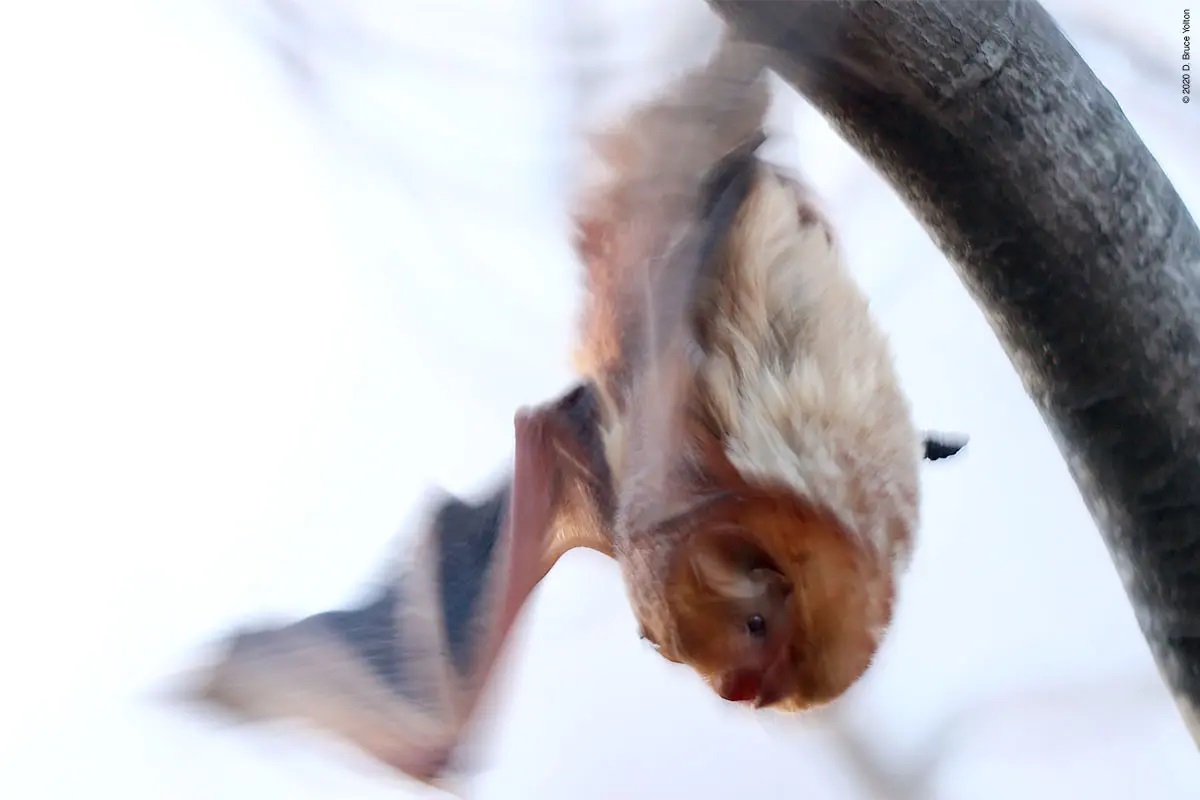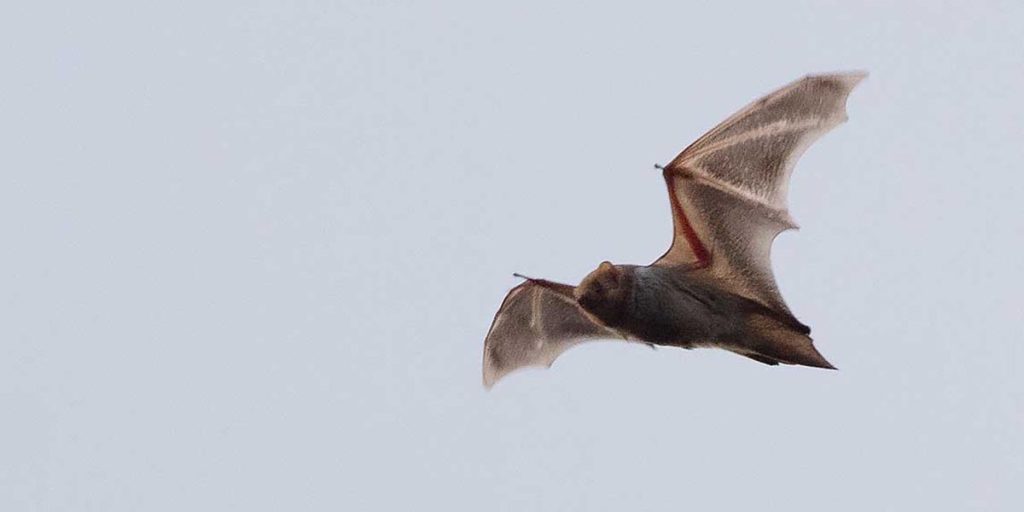Bonnie Eisner
I’ve long enjoyed the biodiversity of Central Park, especially the breathtaking flowers and trees and beautiful birds, but what about bats? The idea that my virtual backyard on the Upper West Side is home to these strange creatures had never crossed my mind until I read an article online about a bat walk being held in the park. Linnean Society of New York, We host free nature observation trips and lectures.
Curiosity piqued, I signed up, and I wasn’t the only one to attend: a sellout crowd gathered for the annual event. Savannah Conheady of Hell’s Kitchen skipped a friend’s cocktail party to take part in her first Bat Walk, while Christina Christian of Astoria took part for the fourth time.
Danielle Gustafson, who led the walks with the help of her husband, Brad Klein, is a self-described bat lover who began taking bat walks in Central Park 20 years ago after she and a friend joined a natural history tour of the Brazilian Amazon organized by the New York Botanical Garden and Bat Conservation International and caught and studied bats.
“I came back from the Amazon thinking, ‘Wow, bats are amazing, and I want to learn everything I can about them,'” says Gustafson, who, when she’s not watching bats, serves as executive director of the EMS FDNY Help Fund, which supports FDNY paramedics and emergency medical personnel.
During the trip, she met the chairman of the board of directors for Bat Conservation International and soon began attending board meetings.

Gustafson and Kate Jones, a postdoctoral researcher at Columbia University’s Earth Institute who specializes in bats and works in extinction prediction, took part in the first-ever bat-watching tour of Central Park. Gustafson, Jones and other researchers and enthusiasts formed the New York Bat Group to learn more about New York’s less-studied bats. Jones handed the bat caretaker baton to Gustafson shortly before returning to the UK in 2005. Gustafson had no formal science training and was hesitant at first, but Jones persuaded her, saying that bat-friendly education was needed and that years of poor PR for bats needed to change. “She gave me a PowerPoint,” Gustafson says, “and said, ‘Bats need friends.'”
Gustafson embraced the slogan and has been leading the Batwalk ever since.
The Linnean Society walk began at 7:45 p.m. outside the American Museum of Natural History, where Gustafson first spoke about bats and what can be seen in the park.
Bats are the only mammals capable of powered flight, she explained, making them ecologically important. Not only do bats eat huge amounts of insects, but they also pollinate plants like bananas and agave, which is used in other areas to make tequila. Bats live longer than other mammals of their size, sometimes living up to 30 years, and most only have one offspring per year. “Bats kind of live a slow life,” Gustafson said.
At night, bats hunt insects such as mosquitoes, moths, and beetles. Contrary to rumors that bats fly into human hair, bats are scared of humans and avoid them. If you see a bat flying nearby, it’s probably searching for insects that humans will attract.
Bats appear quiet to humans, but this is due to the sounds they make to map their environment. Echolocation The sounds they make are at frequencies beyond the range of human hearing: Bat detectors can listen to bats’ ultrasonic calls, and devices like the tiny Echometer Touch, a smartphone plug-in that Gustafson brought with him, can even identify the bat’s species.

No one knows how many bats there are in Central Park—the lack of data frustrates Gustafson—but five species of bats are known to frequent the park. There are three tree-roosting bat species: Eastern long-eared bat (the most numerous), Silver-haired batand White bat. Big brown bat and Three-colored batThe park is also used by animals that hibernate in caves during the colder months.
While the skies were still light, Gustafson and Klein led the group through the park to watch hummingbirds flitting through the trees. These tiny birds love to eat insects, and Gustafson explained that their presence at sunset meant that bats were in the area afterward, eating a significant portion of their body weight in insects each night.
We first stopped at Oak Bridge over the lake to use the handheld bat detectors that Gustafson had provided us with to look for bats coming to drink.
That night, no bats flew into the lake, but a family of raccoons splashing around in the water attracted attention.

The evening picked up steam as we moved to Barnes Lawn, a small open space west of the Ramble. We lay on blankets and watched the silhouettes of bats dart about and dive to suck up insects. It was mesmerizing, like watching a silent air show. “Oh wow!” we let out louds as the elusive creatures flew overhead. Our bat detectors chirped as they flew about, and Klein, with his echo-meter touch, called out species. Most were toe-browed bats. Occasionally, a big brown bat and a silver-haired bat would lock wings and take off together.
During his sighting, Gustafson shared many more facts about the bat.
For bats, she says, threats like white-nose syndrome are a concern: a fast-spreading fungal disease that infects hibernating bats, causing them to wake up more frequently and eventually starve as their fat stores are depleted. The syndrome has killed millions of bats and caused local extinctions, including of the little brown bats that once frequented Central Park, where they were abundant.
Bats face the dangers of urbanization and deforestation. Bat Conservation International“I think urban bats are one of the most important ones,” she said. “As the United States becomes more urbanized, I think we need to understand how to coexist, and if we can figure out how to protect the bats in Central Park, that will give us a really good idea of how to protect bats in other parts of the United States.”

She thinks the walks will encourage people to look up in the sky and see bats. “If you’ve ever been to Central Park at night, you’ve seen bats,” she says. “I think there’s something really magical about the idea of turning on the lights to see bats.”
My fellow bat watchers and I agreed: “It was so much fun walking through the park learning about the fireflies and seeing bats for the first time in Central Park,” Conheady said. “We are so lucky. I was almost in tears of gratitude.”
Curious Upper West Side residents can look for local bats foraging for insects in Central Park or Riverside Park at dusk on warm evenings.
Subscribe to West Side Rag’s free email newsletter here.


